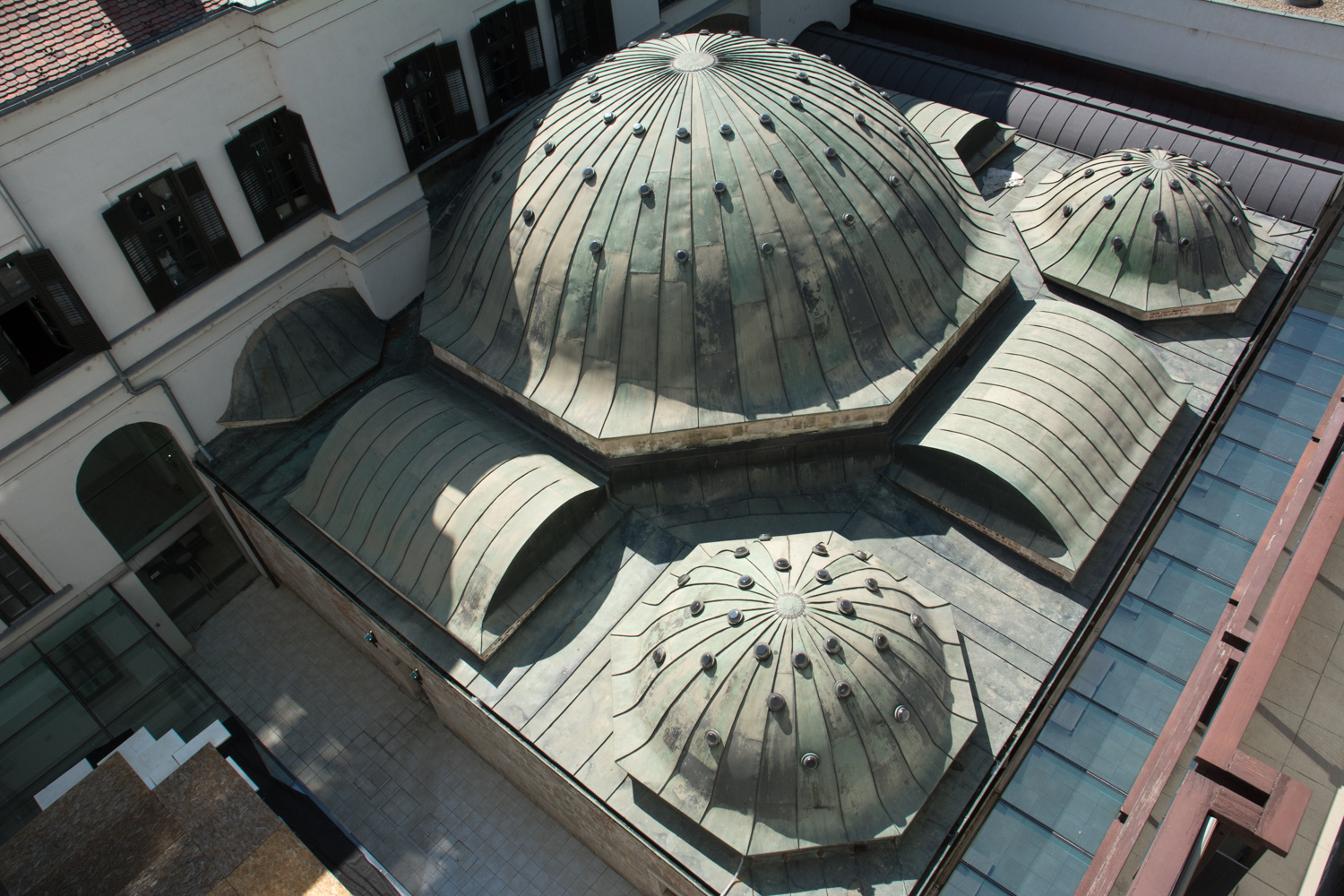Due to the temporary trial service one can enter at a lower price than that of the neighboring Lukács or the popular Rudas through the Frankel Leó Street entrance of the Irgalmasrendi Kórház. This adventurous start turns many a visitor off, and so the bath capable of accomodating 80 people is visited by only some in the morning (9 AM – 12 PM), and the afternoon (3 PM – 9 PM) has yet to see a full house, too.
Veli Bej is a so-called “ilidje”, that is, a bath with mineral water (which is often mistaken for a hammam, which is like a steam bath), with curative springs of calcium carbonate.

Leaving the coeducated changing room we can enter the part with sauna, infrasauna, steamroom and experienceshower, lay down on one of the numerous relaxing beds, or dive into the main attraction, the flat-surface pool of curative water.
Next to the central, eight-sided pool area topped with a dome of breathtaking beauty and the surrounding four family cabins with pools of differing temperatures there’s another area with pools for those either suffering from rheumatic problems or recuperating after operations.
The weight bath seemed a bit intimidating but the Kneipp-basin is like an instant miracle, the water streams in the jacuzzi were powerful enough and the underwater massage and hydroxeur baths looked just fine, too. There’s extra fee for these latter two, and entrance without a prescription is prohibited in the afternoon.

The surrounding Classicist-style buildings designed by József Hild and the part of the hospital built in the 60s housing a rheumatology and a modern cardiology ward have literally grown over the bath. The territory reaching as far as Margaret Bridge has been utilized for healing purposes since the early 1800s. In 1806 István Marczibányi donated it to the order, and this was the site of the first sports swimming pool in Hungary.
The hospital has increased the number of beds as well as facilities over time. In 1950 it came under state control and continued to work under the name ORFI.

With the change of regime started the recompensation of the church, and the order got back the building complex in 2000, together with the Veli Bej Bath inside, that had been unused since the 80s. A serious investment was needed for the revival of the bath partly because of limitations on monument protection. Almost one-third of the total amount of 1 billion was from EU tender money aimed specifically at renovating baths in monument-status buildings and the remaining part was covered by the budget of the order.

The building built in the Ottoman times wasrenovated after the designs of architect Csaba Virág, with both art historians and archeologists taking a part in the reconstruction, who did a great job at restoring the original where conditions allowed. The original walls and water pipes discovered meanwhile were preserved and put on display together with the replica of the plaque that was meant to commemorate the founding in 1574. As new elements, the spaces are defined by the glass-covered cloister and the LED torches designed by Orsolya Székely playfully summoning the past.

The order has been operating the bath, and apparently it won’t change. As Eszter Palotás, architectural engineer, the leader of the project said, Veli Bej’s income was spent on the curing of the poor patients of the hospital even in the 19th centrury. The current trial service means that preparations are being underway with the smooth operation of the attractions, the appropriate content of the curative water and the starting of the planned massage and beauty care services.
After the official opening their prices will adapt to the average 2600 HUF of the baths in the neighborhood but prescriptions won’t be accepted in the Turkish bath.




